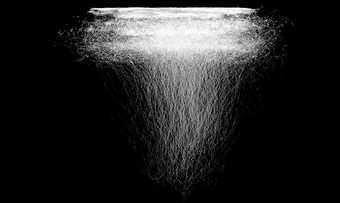This exhibition is an event of special importance in that it contains virtually the whole of the artist’s oeuvre as a sculptor.
The only notable omission is the series of three versions of The Back, the first of which was, however, shown in London as long ago as 1912 and the second of which was included in the open air International Exhibition of Sculpture arranged in 1948 at Battersea Park. So abundant and fertile is the genius of Matisse that he has often decided to work out a chosen theme in such series or, in the case of his paintings and drawings, in a wide range of variations which are not so much a procession of preliminary sketches as a floraison of effort which he feels necessary for the complete expression of the subject matter of the moment.
There is one part of Matisse’s temperament which finds itself at ease in following the tradition of Rodin. This part is Matisse the sculptor who, one must remember, was then about to become the leader of the Fauves.
The nudes sculptured by Matisse in this period are indeed very close to the nudes of Fauve painting. In particular the Recumbent Nude of l907 which reappears in the painting, Recumbent Nude, in memory of Biskra from the Museum at Baltimore. Matisse was then obsessed with a fierce desire to distort the model, one thigh doubled right over the other, an elbow lifted disproportionately over the head. He tended towards exaggeration and simplification. He was cruel in what we now call his expressionism.
In painting this tendency not only expresses itself in the drawing, but also in the frenzy and arbitrariness of the pure colour which is the keynote of so many of his dazzling masterpieces. In sculpture this effect can only be obtained by particularly distorted gestures and the forceful arrangement of masses, but the spirit is the same, which is the spirit of the will carried to excess and consequently having something of the barbarous and primordial, so bizarre in appearance and exalting in effect.
Jean Cassou




